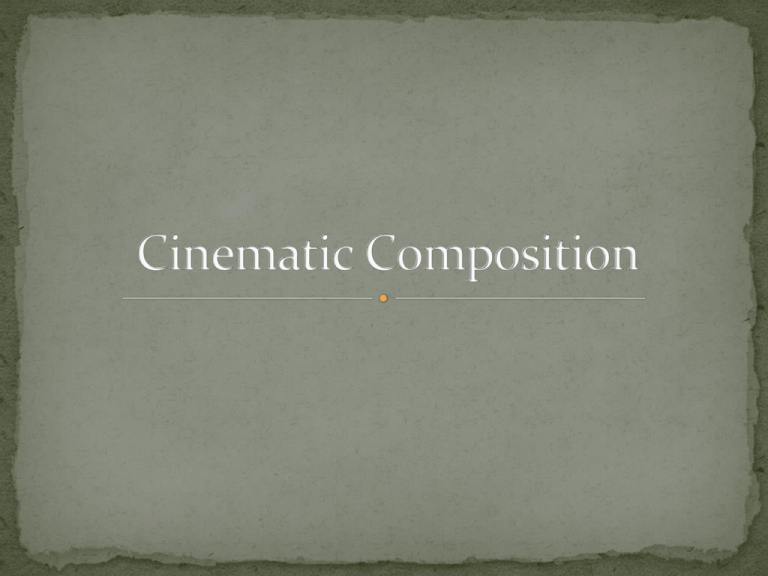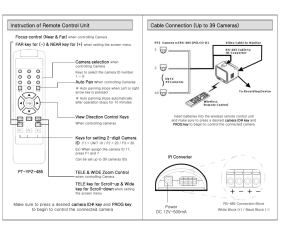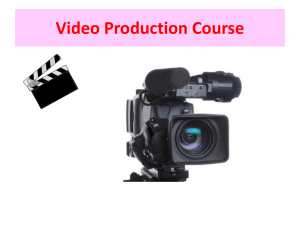Cinematic Composition
advertisement

1. Vertical lines suggest strength, authority, and dignity 2. Diagonal lines crossing the frame suggest action and dynamic movement 3. Curved lines denote fluidity and sensuality; circular movement evoke feelings of exaltation, euphoria, and joy Every shot must be designed with the goals of cinematic composition in mind 1. Directing attention to the object of greatest significance 2. Keeping the image in constant motion 3. Creating an illusion of depth Size and closeness of the object- the eye is directed toward larger, closer objects Sharpness of focus- the eye is also drawn almost automatically to what it can see best Movement- the eye is also drawn to an object in motion Extreme close-ups- brings us so close to the object of interest that we cannot look elsewhere Arrangement of people and objects- the director focuses our attention by his or her arrangement of people and objects in relation to each other Foreground framing- the director generally emphasizes the most important subject with the brightest lighting and sharpest focus Lighting and color- high-contrast areas of light and dark create natural centers of focal interest, as do bright colors in a subdued or drab background Fixed-frame movement- the camera remains in one position, pointing at one spot, movement occurs within the shot in three ways: lateral (side to side), in depth (toward and away the camera), diagonal (combination of first two) Panning- moving the camera’s line of sight in a horizontal plane, to the left and right Tilting- moving the camera’s line of sight in a vertical plane, up and down Zoom lens- a series of lenses that keep an image in constant focus- allows the camera to appear to glide toward or away from the subject Movement of subject- lateral movement exclusively creates a flat image, so diagonal or head-on movement is used Movement of camera Apparent camera movement- using zoom lenses Change of focal planes- created using rack focus, one continuous shot focusing the camera lens, in turn, on objects in different planes of depth Deep focus- the use of special lenses that allow the camera to focus simultaneously and with equal clarity on objects anywhere from two feet to several hundred feet away Three dimensional arrangement of people and objects Foreground framing- subject is framed by an object or objects in the near foreground Special lighting effects Use of reflections Low-angle shot- the camera is placed below eye level, the size and importance of the subject are exaggerated High-angle shot- the camera is placed above eye level, seems to dwarf the subject and diminish its importance Wide-angle lens- exaggerates the perspective so that the distance between an object in the foreground and one in the background seems much greater than it actually is Telephoto lens- compresses depth so that the distance between foreground and background objects seems less than it actually is Fish-eye lens- bends both horizontal and vertical planes and distorts depth relationships











